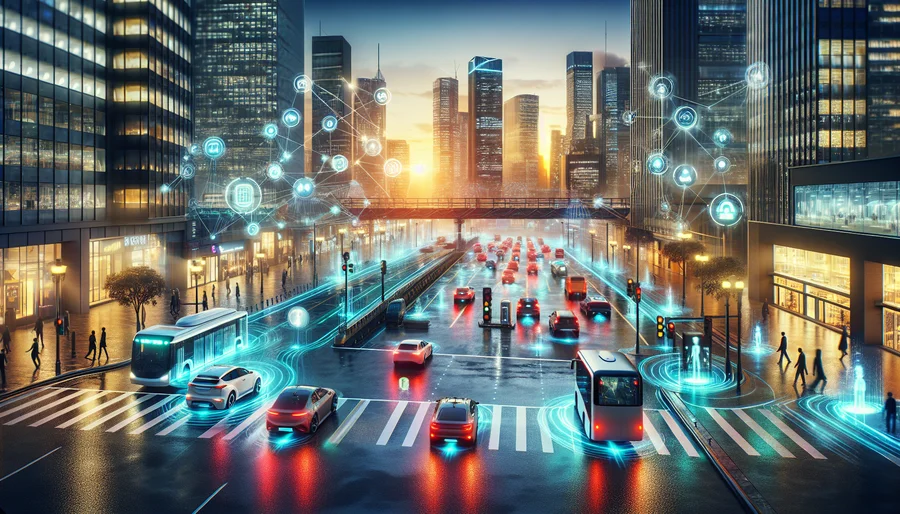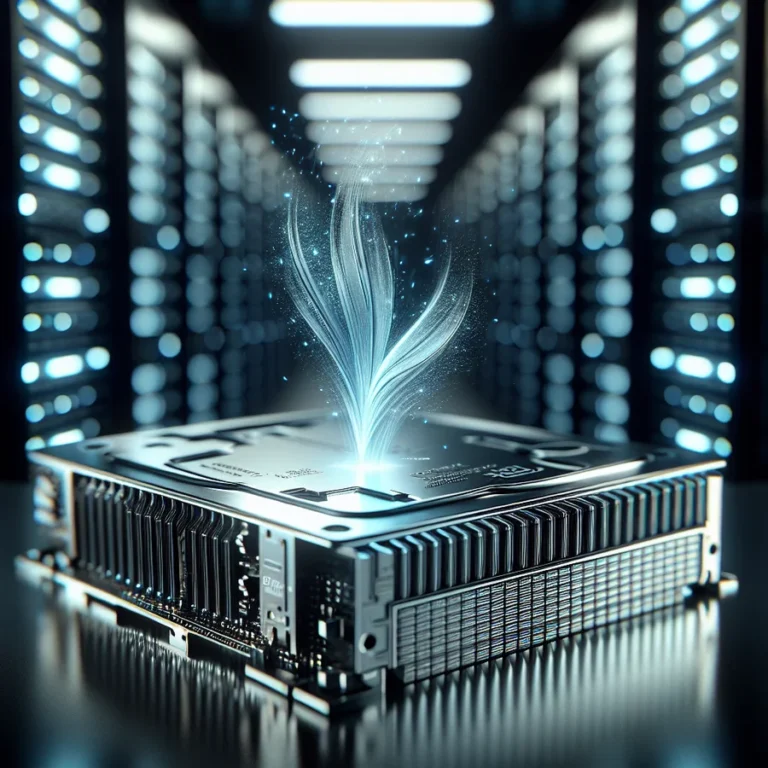Implementing DeepSeek for Smart City Traffic Management
Smart cities are leveraging AI to improve urban living. One promising application is using AI for traffic management. DeepSeek, an advanced AI model, offers powerful capabilities. This guide explores how implementing DeepSeek can revolutionize smart city traffic management.
Imagine a city where traffic flows smoothly, reducing congestion and pollution. DeepSeek can analyze real-time data to optimize traffic flow. It helps create a more efficient and sustainable urban environment. Let’s dive into the specifics of implementing DeepSeek for smart city traffic management.
Understanding DeepSeek and Its Capabilities
DeepSeek is an AI model excelling in real-time data analysis and decision-making. It utilizes advanced neural networks and self-learning algorithms. This allows it to adapt dynamically to changing conditions. For traffic management, this means responding instantly to fluctuations in traffic volume, weather, and other factors.
Unlike traditional AI models that rely on historical data, DeepSeek harnesses live information streams. This makes it ideal for applications requiring instant insights. Its ability to process vast amounts of data with ultra-low latency is crucial for effective traffic control.
Benefits of Implementing DeepSeek for Smart City Traffic Management
Implementing DeepSeek for smart city traffic management offers numerous advantages. These benefits range from reduced congestion to improved air quality. Let’s examine some key improvements.
- Reduced Traffic Congestion: By dynamically adjusting traffic signals, DeepSeek minimizes bottlenecks.
- Improved Traffic Flow: Real-time analysis allows for optimized route planning.
- Decreased Commute Times: Commuters spend less time stuck in traffic.
- Lower CO2 Emissions: Shorter idling times lead to reduced pollution.
- Enhanced Emergency Response: AI facilitates faster ambulance routing during critical incidents.
These benefits contribute to a more livable and sustainable urban environment. Implementing DeepSeek can significantly enhance the quality of life for city residents.
Key Components for Implementing DeepSeek in Traffic Systems
Successful implementation of DeepSeek for smart city traffic management requires several key components. These elements work together to create an intelligent and responsive traffic system. Here’s a breakdown:
- Real-Time Data Collection: Traffic cameras, sensors, and GPS devices provide continuous data streams.
- Advanced Neural Networks: These networks process live data with ultra-low latency.
- Self-Learning Algorithms: These algorithms enable continuous AI evolution and adaptation.
- Dynamic Traffic Light Control: AI-driven traffic lights adjust signals dynamically based on real-time conditions.
- Integration with Navigation Systems: Providing real-time route suggestions to drivers.
These components ensure that DeepSeek can effectively manage traffic flow. They enable the system to respond dynamically to changing conditions.
Real-Time Data Collection for DeepSeek Traffic Management
Collecting real-time data is crucial for DeepSeek to function effectively. This involves using various sensors and technologies to gather information about traffic conditions.
- Traffic Cameras: Provide visual data on traffic density and incidents.
- Road Sensors: Measure vehicle speed and volume.
- GPS Data: Track vehicle locations and movement patterns.
- Weather Data: Account for weather conditions affecting traffic.
This comprehensive data collection ensures that DeepSeek has the information it needs to make informed decisions.
Advanced Neural Networks in DeepSeek for Traffic Management
DeepSeek utilizes advanced neural networks to process the collected data. These networks are designed to handle large volumes of information with minimal delay.
- Low Latency Processing: Ensures quick responses to changing traffic conditions.
- Pattern Recognition: Identifies recurring traffic patterns and anomalies.
- Predictive Modeling: Forecasts future traffic conditions based on current data.
These neural networks are the backbone of DeepSeek’s ability to optimize traffic flow in real-time.
Self-Learning Algorithms for DeepSeek Traffic Optimization
Self-learning algorithms enable DeepSeek to continuously improve its performance. By analyzing past decisions and outcomes, the system learns to make better choices in the future.
- Adaptive Learning: Adjusts strategies based on real-world results.
- Optimization Over Time: Improves traffic flow efficiency continuously.
- Anomaly Detection: Identifies unusual events and adapts accordingly.
This continuous learning ensures that DeepSeek remains effective even as traffic patterns evolve.
Real-World Examples of DeepSeek in Action
Several cities have already begun implementing DeepSeek for smart city traffic management. These examples demonstrate the potential benefits of this technology. Here are a few notable cases:
- Tokyo, Japan: Implemented DeepSeek-powered smart traffic management, reducing congestion by 40% and CO2 emissions by 25%.
- Shenzhen, China: Integrated DeepSeek into its traffic management systems, optimizing traffic light systems and reducing congestion.
- Guiyang, China: Uses DeepSeek for intelligent chatbots and emergency dispatch systems, improving response times and saving lives.
These success stories highlight the transformative impact of DeepSeek on urban traffic flow. They provide a glimpse into the future of smart city traffic management.
Challenges and Considerations for Implementing DeepSeek
While implementing DeepSeek for smart city traffic management offers significant benefits, it also presents challenges. Cities must address these issues to ensure successful deployment. Here are some key considerations:
- Data Privacy: Protecting sensitive data collected by traffic sensors and cameras.
- Technical Integration: Ensuring compatibility with existing infrastructure.
- Public Acceptance: Building trust in AI-driven systems.
- Infrastructure Requirements: Providing sufficient computing power and energy resources.
- Cybersecurity: Protecting against cyberattacks that could disrupt traffic flow. One way to enhance cybersecurity is through AI Cybersecurity.
Addressing these challenges is crucial for realizing the full potential of DeepSeek. Careful planning and execution are essential for successful implementation.
Future Trends in AI-Powered Traffic Management
The future of smart city traffic management is bright. As AI technology continues to evolve, we can expect even more sophisticated solutions. Here are some emerging trends:
- Quantum AI Integration: Allowing for even faster computations and more complex analysis.
- Decentralized AI Networks: Securing AI models through blockchain technology.
- Predictive Maintenance: Using AI to anticipate and prevent equipment failures.
- Integration with Autonomous Vehicles: Optimizing traffic flow for self-driving cars.
- Personalized Traffic Management: Tailoring traffic solutions to individual needs.
These advancements promise to further revolutionize urban mobility. They will create even more efficient, sustainable, and livable cities.
Conclusion
Implementing DeepSeek for smart city traffic management offers a powerful solution to urban congestion and pollution. By leveraging real-time data analysis and self-learning algorithms, DeepSeek can optimize traffic flow, reduce commute times, and improve air quality. While challenges exist, the potential benefits are immense. As AI technology advances, DeepSeek and similar models will play an increasingly important role in shaping the future of urban mobility, creating smarter, more sustainable, and more livable cities for all.
Frequently Asked Questions
How does DeepSeek analyze traffic data?
DeepSeek uses advanced neural networks to process real-time data from traffic cameras, sensors, and GPS devices. It identifies patterns, predicts congestion, and optimizes traffic flow.
What are the environmental benefits of using DeepSeek for traffic management?
By reducing traffic congestion and idling times, DeepSeek lowers CO2 emissions, contributing to improved air quality and a more sustainable urban environment.
How can cities ensure data privacy when implementing DeepSeek?
Cities can implement robust data governance frameworks, establish clear privacy protocols, and provide citizens with control over their personal information. You can read more about DeepSeek Data Privacy.
What infrastructure is needed to support DeepSeek in traffic management?
Sufficient computing power, data centers, cloud services, and a skilled workforce are needed to support DeepSeek Cloud Deployment






